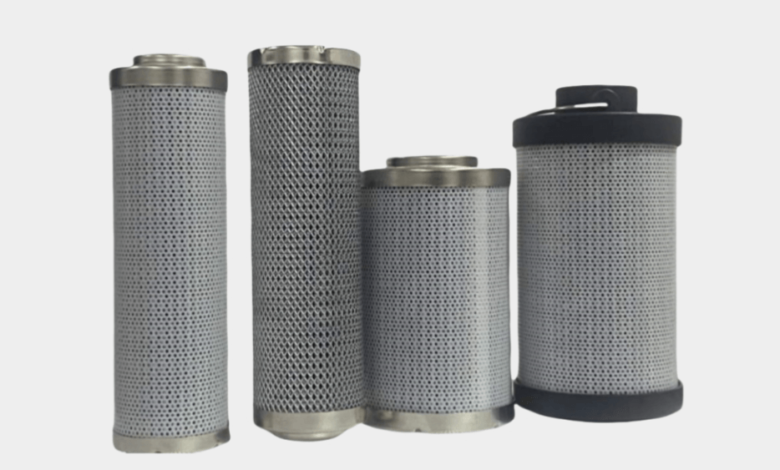The Importance of Fine Mesh Fabrics in Water and Air Filtration

Introduction
Clean air and water are fundamental to maintaining health, environmental safety, and industrial efficiency. As pollution levels rise, the demand for effective filtration materials continues to grow. Among the many materials used in filtration, tela para filtrar plays a crucial role. This mesh fabric, made from durable fibers, helps separate impurities from fluids and gases efficiently. It is widely used across various industries such as water purification, food processing, pharmaceuticals, and environmental protection.
This article explores the composition, applications, and benefits of tela para filtrar, explaining why it has become a preferred choice for modern filtration systems.
Understanding Filter Mesh Fabrics
Tela para filtrar refers to a type of woven mesh material that allows liquids or gases to pass through while trapping unwanted particles. Depending on the filtration requirement, it can be made from materials such as polyester, nylon, or stainless steel. The size of the mesh openings determines which particles can pass and which are retained, ensuring precision in the filtration process.
The fabric is designed to be flexible yet strong enough to endure repeated use, making it a cost-effective and reliable option for multiple filtration systems.
See also: Harmonicode Sports and Its Future: Where Tech Meets Athletic Innovation
Manufacturing Process and Material Composition
The performance of tela para filtrar depends heavily on the materials and manufacturing techniques used. High-quality synthetic fibers are selected for their strength, resistance, and adaptability to different environments.
The main production steps include:
- Material Selection: Choosing fibers that suit the operating conditions such as temperature, chemical exposure, and fluid type.
- Weaving Process: Creating the mesh structure using advanced weaving machines that control the pore size with precision.
- Heat Treatment: Stabilizing the fibers to maintain consistent pore structure and prevent deformation.
- Finishing: Adding protective coatings that enhance resistance to corrosion, moisture, and microbial growth.
This process results in a durable and efficient filtration fabric that can be tailored to various applications.
Key Applications of Tela Para Filtrar
Tela para filtrar is used in a wide range of filtration systems. Its versatility and adaptability make it suitable for domestic, commercial, and industrial settings. Some of the most common applications include:
1. Water Purification Systems
In household and municipal water treatment facilities, tela para filtrar serves as a pre-filter or main filtering layer. It effectively removes sediment, sand, rust, and suspended particles, providing clean and safe water for consumption and use.
2. Air Filtration Units
In ventilation and air purification systems, the fabric helps trap dust, pollen, and airborne contaminants. It improves indoor air quality, especially in hospitals, laboratories, and manufacturing plants where clean air is essential.
3. Food and Beverage Industry
The food industry uses tela para filtrar to remove impurities from liquids like juices, milk, and oils. It ensures hygiene and quality control without altering the texture or flavor of the products.
4. Chemical and Pharmaceutical Applications
In laboratories and production units, the fabric filters out unwanted particles from chemical mixtures and medicinal solutions. Its chemical resistance ensures that the materials maintain purity throughout the process.
5. Environmental and Agricultural Uses
Tela para filtrar is employed in wastewater treatment, irrigation systems, and aquaculture. It helps filter out harmful solids and protects the environment by minimizing water pollution.
Advantages of Using Tela Para Filtrar
The popularity of tela para filtrar can be attributed to its numerous advantages over traditional filtering materials.
- Durability: Designed to withstand pressure, temperature changes, and chemical exposure.
- Reusability: Unlike disposable filters, it can be cleaned and reused multiple times, reducing operational costs.
- High Filtration Accuracy: The fabric’s uniform pore structure ensures consistent performance.
- Lightweight and Flexible: Easy to install and adjust within filtration systems.
- Cost-Effective: Offers excellent performance at a lower long-term cost compared to paper or ceramic filters.
- Eco-Friendly: Its reusability helps reduce waste and promotes sustainability.
These features make it a practical choice for businesses and industries focused on efficiency and environmental responsibility.
Comparison with Other Filtration Materials
When compared with other filtration materials such as paper filters, sand, or membranes, tela para filtrar stands out for its balance between durability and performance. Paper filters are cheap but not reusable, while membrane filters offer high precision but come at a much higher cost. Tela para filtrar provides a middle ground—efficient filtration, long lifespan, and easy maintenance.
Moreover, its adaptability allows it to be customized for various particle sizes, making it suitable for applications ranging from coarse filtration to micro-filtration processes.
Maintenance and Cleaning Practices
To maintain its effectiveness, tela para filtrar should be cleaned regularly. Proper maintenance ensures the fabric retains its filtering capacity and extends its service life.
Common cleaning methods include:
- Rinsing: For light dirt accumulation, rinsing with clean water is sufficient.
- Soaking in Detergent: For tougher contamination, soaking the mesh in a mild detergent solution helps remove fine particles.
- Backwashing: In industrial setups, water is passed through the filter in the opposite direction to flush out trapped debris.
- Air Drying: After cleaning, the fabric should be air-dried completely before reuse.
Following these steps ensures consistent filtration performance and long-term reliability.
Environmental and Economic Impact
Tela para filtrar contributes significantly to environmental protection and sustainable resource use. Its ability to filter and recycle water supports water conservation efforts, especially in regions facing water scarcity. Because it is reusable and long-lasting, it reduces waste generation compared to disposable filter media.
From an economic perspective, industries benefit from reduced maintenance costs, less downtime, and extended equipment lifespan. These advantages make tela para filtrar a smart investment for both small and large-scale operations.
Choosing the Right Filter Fabric
Selecting the appropriate tela para filtrar depends on several factors:
- The type of fluid or gas to be filtered
- The size and nature of contaminants
- Temperature and chemical exposure levels
- Desired flow rate and filtration precision
Consulting with a filtration expert can help in determining the best fabric type for specific needs, ensuring maximum efficiency and performance.
Conclusion
Tela para filtrar plays a vital role in ensuring cleaner water, air, and industrial processes. Its durability, versatility, and eco-friendly nature make it a reliable choice for modern filtration systems. From homes to factories, it provides an efficient and cost-effective solution to meet global demands for purity and sustainability.
As the world moves toward greener technologies and sustainable practices, tela para filtrar stands out as a material that supports both efficiency and environmental responsibility. With proper selection and maintenance, it continues to be an indispensable part of filtration systems worldwide.





